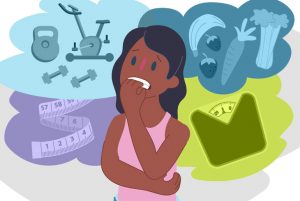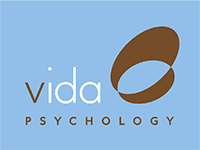20 Oct Eating Disorders – A Quick Guide

By Olivia Nash-Dolby.
Content warning: This blog post includes information about eating disorders. Please read with care.
Eating disorders are medical and mental illnesses characterised by disturbances in thoughts, behaviours and attitudes around food and eating. It’s estimated that 1 million Australians are living with an eating disorder, and this number is increasing.
Eating disorders are not a lifestyle choice, attention-seeking or a “diet gone wrong”. They are serious illnesses that can affect an individual’s emotional, mental, social and physical wellbeing. While the exact causes of eating disorders are not yet understood fully, research suggests that it is a combination of genetics, hormones, psychological factors and social influences.
Eating disorders take many different forms and the Diagnostic and Statistical Manual of Mental Disorders (DSM) recognises the following eating disorders:
- Anorexia nervosa
- Binge eating disorder
- Bulimia nervosa
- Avoidant/Restrictive Food Intake Disorder (ARFID)
- Other eating disorders
Some more information on each of these disorders is listed below:
Anorexia nervosa: Generally develops during adolescence or young adulthood and tends to affect more women than men. Characteristics include:
- Intense fear of gaining weight and rapid weight loss
- Repetitive body checking and preoccupation with food, body shape, weight or appearance
- Extremely restricted eating by avoiding or skipping meals and excessive exercise
- Heightened anxiety around meal times and/or rituals around food (for example, cutting food into small pieces or eating slowly)
Binge eating disorder: Typically begins during adolescence and early adulthood (although it can develop later on) and is one of the most common eating disorders. Common symptoms include:
- Eating large amounts of foods rapidly, sometimes in secret and until uncomfortably full, despite not feeling hungry
- Feeling a lack of control around food or eating
- Feelings of distress, such as shame, disgust, or guilt, when thinking about the binge-eating behaviour or after overeating
- No use of purging behaviours such as calorie restriction, vomiting, excessive exercise or laxative use to compensate for the binging
Bulimia nervosa: Like binge eating disorder, people with bulimia nervosa eat a large amount of food in a short time frame (bingeing), but take action to get rid of this food (purging) such as vomiting, over-exercising and/or not eating for a long period of time. Common symptoms include:
- Eating in private and avoiding meals with others
- Vomiting, misusing laxatives or appetite suppressants and/or excessive or compulsive exercise to avoid weight gain
- Having a distorted body image and/or low self-esteem
- Fear of gaining weight, and gaining or losing weight quite rapidly
ARFID: Frequently develops during infancy or early childhood, but can sometimes persist into adulthood. People with ARFID experience disturbed eating due to a lack of interest in eating or avoiding certain smells, tastes, colours, temperatures etc. A person with ARFID may also be afraid of the consequences associated with eating, such as choking. Characteristics of this disorder include:
- Avoidance/restriction of food that prevents a person from eating sufficient calories or nutrients
- Weight loss, or failure to achieve weight gain or physical growth in children
- Eating habits that interfere with normal day to day activities, like eating with others
- Dependence on tube feeding (nutrients delivered directly to the stomach) or oral nutritional supplements
Other eating disorders: This includes two categories; Other Specified Feeding or Eating Disorder (OSFED) and Unspecified Feeding or Eating Disorder (UFED). A person with OSFED will often have symptoms similar to another eating disorder (such as anorexia or bulimia) but do not meet the full diagnostic criteria in the DSM. Someone with OSFED will have behaviours that cause significant emotional distress or impact their day-to-day functioning but do not meet the full DSM criteria for any of the feeding or eating disorders. These conditions are not an indication of a less severe eating disorder and are simply a different group of symptoms.
Learning to recognise early warning signs of an eating disorder in yourself or someone close to you is vital in seeking treatment before it becomes damaging to mental and physical health. The signs and symptoms look different for everyone, so it’s important to speak to a professional (like a GP or therapist who specialises in eating disorders) so that you, or someone you know, can access appropriate support and treatment.
Recovery from an eating disorder isn’t always linear. But with support, recovery is possible.
Resources:
Butterfly Organisation:
Website: www.butterfly.org.au Phone: 1800 334 673
Eating Disorders Victoria:
Website: www.eatingdisorders.org.au Phone: 1300 550 236
National Eating Disorders Collaboration:
Website: www.nedc.com.au Phone: 1800 334 673
This blog was written by Olivia Nash-Dolby, to learn more about Olivia’s experience, click here.
To book an appointment with Olivia or one of our other Psychologists, click here.


Sorry, the comment form is closed at this time.